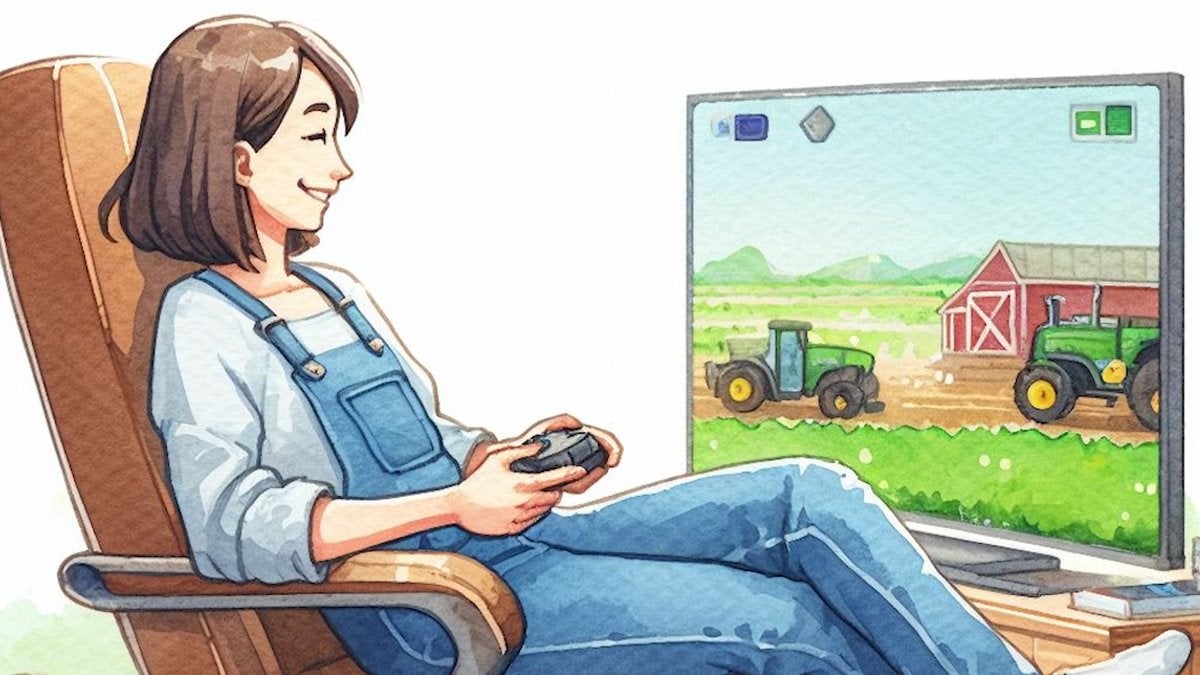![]() Key Takeaway
Key Takeaway
Video game therapy is the insertion of playing video games into common therapeutic practices.
They can be a safe and comfortable way for us to process the complex and chaotic emotions associated with loss. While professional help is arguably the most proven way to deal with chronic mental afflictions, taking comfort in a form of media should not be overlooked. Many studies claim (and prove) that games are superior for reducing stress than most other methods.
Playing video games is a fun activity that you can do with a friend: arguably the best way to reduce anxiety. As such, games that feature relaxing gameplay can lead to less stressful lives.
Growth is a huge factor in therapy, and video games are designed to challenge someone to improve in one or more areas. They also provide clear instructions and tangible rewards, which can be used as a part of treatment in a way that is fun and intuitive.
It’s no coincidence that your favorite titles can make you feel better at even the darkest times. This is the core belief in video game therapy: to use a fun and interactive medium to increase positive mental stimulation. Doing so can help treat conditions like depression, anxiety, and more.
Table Of Contents
Video Game Therapy Should Be More Common Video Essay
What Is Video Game Therapy?
Traditional methods of therapy involve a lot of discussion with not too much focus on activities. Video game therapy is the insertion of playing video games into common therapeutic practices. The purpose of doing so is to give patients a stimulating way to explore their thoughts and feelings, to relax and motivate them, and to help them learn new ways to overcome old obstacles in their healing journeys.
Video Games Help Us Cope With Loss
Losing something—or someone—important to you is always hard. This theme is explored through a great number of titles. One game that focuses on this concept heavily is Shadow of the Colossus. The protagonist, Wander, seeks to revive a young woman named Mono. The relationship between these two is never defined in detail; however, it’s clear that Wander cares a great deal for Mono.
Mono was sacrificed because she was believed to have a cursed destiny. Again, the game is vague about what this means. With that said, the reason behind Wander’s loss doesn’t matter as much as his actions following this loss. Unable to accept Mono’s passing, Wander breaks the taboo of entering the Forbidden Land in order to find a way to resurrect Mono.

Although the circumstances are based in a fantasy setting, the ordeal Wander faces is all too relatable. Everyone has to deal with death at some point, whether it is that of a friend, family member, or another important person in one’s life. Video games can be a safe and comfortable way for us to process the complex and chaotic emotions associated with loss.
How Wander deals with Mono’s death is also typical for the average human: initial denial of reality. Denial is the first step in the five stages of grief, and we can see Wander exhibit the other four reactions as well.
The Five Stages of Grief in Shadow of the Colossus
Wander starts the game in a state of denial in regard to Mono’s death. He travels to the Forbidden Land to revive Mono because he is unwilling to let her go. The anti-hero travels a long distance carrying Mono’s body while astride Agro, his faithful steed. No one who is able to understand and accept a death would go through such great lengths.
Anger comes into play in a different manner than in a typical real-world procession of grief. We don’t see Wander exhibit traditional signs of anger; however, later in a playthrough of Shadow of the Colossus, we learn about Wander’s rage-borne actions when Lord Emon appears in a cutscene. After Mono’s death, not only did Wander take her body from its resting place, but he also stole a sacred sword. He uses this ancient and revered blade to cut down the mighty colossi.
All of this points to a character who is unable to control their destructive urges out of a desire to meet their goal. It’s heavily implied that Wander knows exactly what he’s doing and that he is well aware of the forbidden ritual to resurrect the dead and how the ancient sword is connected to it. Dormin was sealed away for being extremely dangerous, but Wander does not care: he only wants Mono back. Nothing exemplifies anger like ignoring the safety of oneself and possibly that of an entire world and its people.
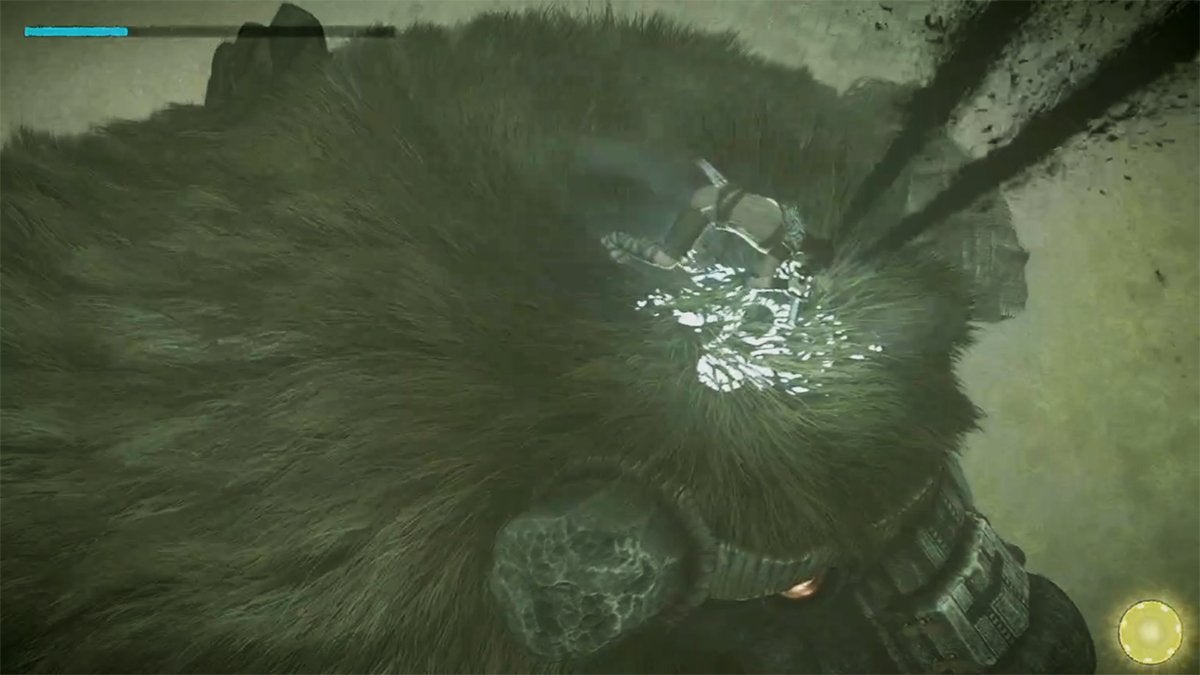
Next, we can see how Wander literally bargains while grieving over Mono’s death. Once he reaches the Shine of Worship, he willingly makes a pact with Dormin to resurrect Mono. Again, it seems Wander knows exactly how perilous this is, yet he does so anyway regardless of the risks. The ancient and mighty Dormin even warns Wander of the price he may need to pay to revive Mono, but this doesn’t deter the anti-hero. In fact, bargaining with life and death never yields positive results—but it is always tempting when there doesn’t seem to be any other options.
Although gauging how depressed a character is when they’re by themselves is tough, we can see a tangible representation of this through Wander’s body decaying over the course of the game. Every time Wander slays a colossus, more and more black veins increasingly appear on his face and body. He is physically (and likely psychologically) feeling the effects of killing. Yet Wander continues along the path of destruction and death. He’s sinking deeper and deeper into a devolving corporeal and mental state. Much like how some people are prone to do when faced with overwhelming sadness: they lose their motivation to perform basic tasks and sometimes care for themselves and their dependants.
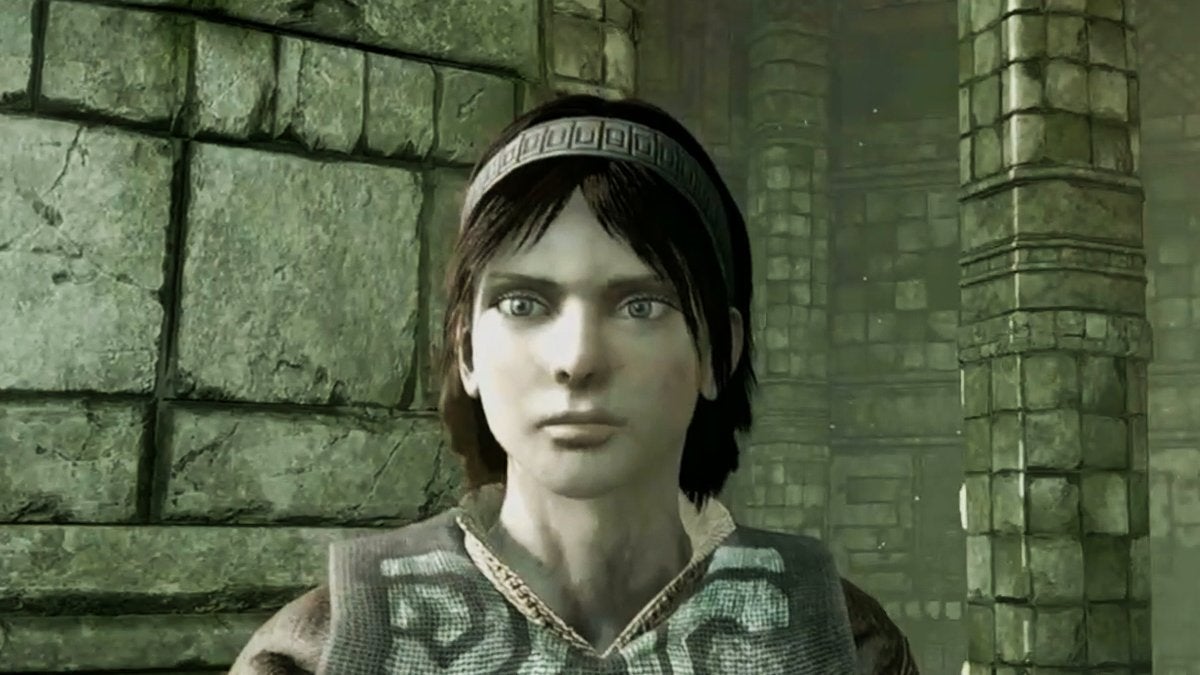
Last, but not least, is acceptance. Wander, as a human, does not exhibit any acceptance. However, at the end of the game, the player is forced to do so after Dormin possesses Wander’s body. Despite gaining immense power, the player is too slow in Dormin’s form to stop Lord Emon’s party from escaping. You simply must accept that they are beyond your reach. This is identical to how most of the colossi must have felt while fighting Wander. Now that the tables are turned, the player can empathize with the beings they’ve been slaying up until this point.
Lord Emon sends the ancient sword into a pool of water, which begins glowing with a bright light that pulls the player towards it. There is no way to avoid being eventually pulled into the pool of light; however, the game lets you try. You can slow down how quickly you’re drawn into the light by running away from it, but, in the end, you’ll realize that there’s no escape. At some point, you have to set your controller down and let Wander get absorbed by his fate. When faced with the unthinkable, such as through great loss, many will resist moving on. However, if you want to continue living your life, there’s no other option. You have to move on eventually.
Shadow of the Colossus in Reign Over Me
Many people need therapy to cope with a significant loss, but some use a video game in place of traditional treatment. In the 2007 movie starring Adam Sandler and Don Cheadle, Sandler’s character plays Shadow of the Colossus in order to come to terms with the death of his wife and children. Sandler’s character, Charlie, relates to Wander’s desire to bring back lost loved ones.
Digging deeper, we can see other similarities between Charlie and Wander as well. Both seek solitude, disregard many aspects of “normal” life, and confide in only one other individual. In the latter case, Charlie eventually talks to Don Cheadle’s character—Alan, an old friend of Charlie from college—about what he’s feeling. In SotC, Wander’s only companion is Agro: a steed as well as a dear friend.
Reign Over Me illustrates how beneficial a video game can be as a form of therapy. Before Charlie reconnected with Alan, Shadow of the Colossus was Charlie’s only refuge from the crushing depression that was assaulting him. While professional help is arguably the most proven way to deal with chronic mental afflictions, taking comfort in a form of media should not be overlooked.
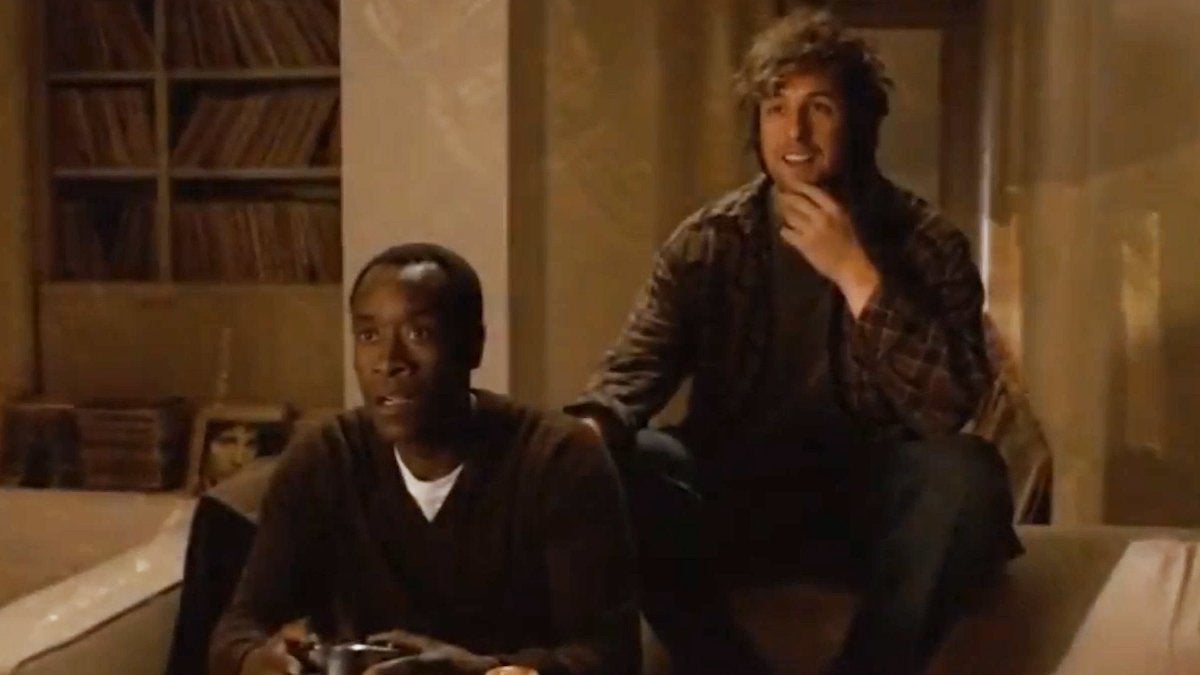
In 2022, a study took a close look at how viable video games are at reducing symptoms of depression. The researchers found that, although not a cure, playing video games in “a fantasy land with a certain psychoeducational content can enhance coping skills and increase motivation.” Furthermore, this study discussed the fact that “Patients may perceive video games not as a treatment but as a reward,” which increased the positive results of a patient’s therapy in many cases.
On top of that, plenty of patients were “beneficiated by the rewarding effect of playing video games,” meaning that their mental state improved while actively gaming. Another point in this study’s discussion contemplated the potential clinical practices healthcare practitioners can use. It’s stated that “video games offer some strategic advantages and could be a useful add-on to traditional approaches.”
Gaming Can Make You Less Anxious
Anxiety is classified as a sense of worry about current or future situations. Uncertainty can stress you out more than actual problems in your life. Your brain can magnify negative possibilities beyond reason; there’s no upper limit for uncertainty. That’s why anxiety can feel so crippling.
Even tried and true methods discussed in countless self-help books may not reduce anxiety. This is likely the result of everyone’s anxiety stemming from significantly varied sources. What’s more, everyone’s mind processes information in different ways. No single method will help everyone. This is where video game therapy comes into play.
By choosing a method that’s more of a reward than a treatment, researchers in at least eight separate studies found that “games were superior for reducing stress when compared with [other methods]…” However, what game one uses to relax matters greatly.
Coffee Talk 2: Hibiscus & Butterfly Relaxes Players
In Coffee Talk 2: Hibiscus & Butterfly, players take on the role of a barista in an alternate reality of Seattle where humans and non-humans live side-by-side. Throughout the game, players not only must prepare drinks for every customer, but also chat with them in a mostly low-stress manner. While there are plenty of choices to be made, none of them affect you as the player. All the conflicts in-game revolve around the café’s customers.
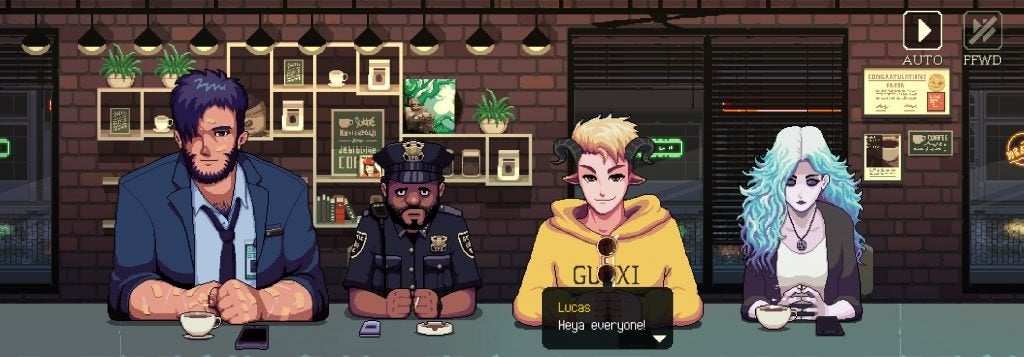
This gives gamers an unintrusive way to deal with issues. You’re there to be a shoulder to lean on or an open ear to hear a stressed voice. When you find a solution or help lead to one, you gain a sense of accomplishment. Even better is that you can see the payoff for your choices through happy endings! When your choices lead to a positive outcome, you develop confidence, which leads to a better mental state. One that’s potentially less anxious.
By helping each visitor, you’re helping yourself. Not only by progressing the plot but also by subconsciously realizing that sometimes situations don’t end badly. Such seeds of optimism can flourish within, growing into strong oaks of calm dispositions. The easy-going lo-fi beats certainly don’t hurt either!
Connecting With Other Gamers Can Be Calming
In this digital age, we’re all connected through various electronic devices. However, that can also make some feel further apart. Playing a fun video game with a friend can bridge that gap in a way that traditional therapy can’t.
Collaborative efforts in games are often rewarding. You can see the legacy of your labors—all while spending time with someone special. As social animals, humans need companionship to remain mentally stable and functional in society. Over the last few thousand years, humans have built incredible things: impressive monuments, cultural phenomena, and grand civilizations. By building a house with a buddy in Minecraft, you’re following in the steps of our ancestors…but, you know, in a more easy-going manner.
Alternatively, the game itself may have little to do with this calming effect. It may be the person you’re playing with that matters the most. In the end, doing a fun activity with a person who cares about you can be the best way to reduce anxiety.
Leisurely Gaming Is Love
Another great example of a game that can reduce anxiety is Stardew Valley. In real life, tending a farm is hard work. However, simulation games like Stardew Valley have a gameplay loop that makes normally mundane tasks enjoyable. Seeing your efforts bearing fruit (literally, in some cases), allows you to reap the rewards and gain a sense of fulfillment—like we’ve mentioned above.
But there’s more to it than that. In this amazing game, many people have found a place of respite from the chaos of everyday life. The villagers of Pelican Town feel less like NPCs and more like real people with unique dreams, personalities, and routines. The peaceful escapism of Stardew Valley is the reason it’s much-loved by its fans.
Video game therapy that features relaxing gameplay can lead to less stressful lives. After a grueling day at work, you can always take solace in the fact that your blueberry patch is waiting for you a few clicks away. It’ll always be there for you, which is sometimes not true for other things in your life. When you’re tired of the real world, you can spend some time in a virtual one. Take a break, do some fishing, and then call it a day. Then, start tomorrow off feeling refreshed.
Playing Video Games Can Help You Persevere
For most games, you only lose if you stop playing. With infinite retries, the only reason to give up is if you don’t feel like improving and succeeding—which is rare when playing games you like. One developer that takes this concept very seriously is FromSoftware, the creator of the Dark Souls games, Elden Ring, and Armored Core VI: Fires of Rubicon (among many other renowned titles). They make their games hard on purpose: to push players to reach their true potential.
No one starts off being good at a game; developing skills takes time and patience. What’s more, you’re rewarded for your newfound strength by becoming able to perform feats of which you previously weren’t capable.
Think of a boss that took you a ton of tries to beat. Eventually, when you overcame them, you felt amazing! By reading that last sentence, your brain probably dosed you with some good vibes at recalling your hard-earned victory. Great success lives on after a battle. They’re events you can recall at any time to remind yourself that you’re not a loser or a quitter; you’re a fearless warrior!
Learning, Growing, and Thriving in Armored Core 6
Growth is a huge factor in video game therapy. It’s one of the areas where video games totally surpass traditional forms of therapy. This is possible thanks to the way most games are designed.
The premise of pretty much every video game is to accomplish a specified goal. The game then teaches you about how to reach that goal but does not simply hand it to you after a while. You need to earn your reward. In well-made games, you have all you need to reach your goal and attain your reward.
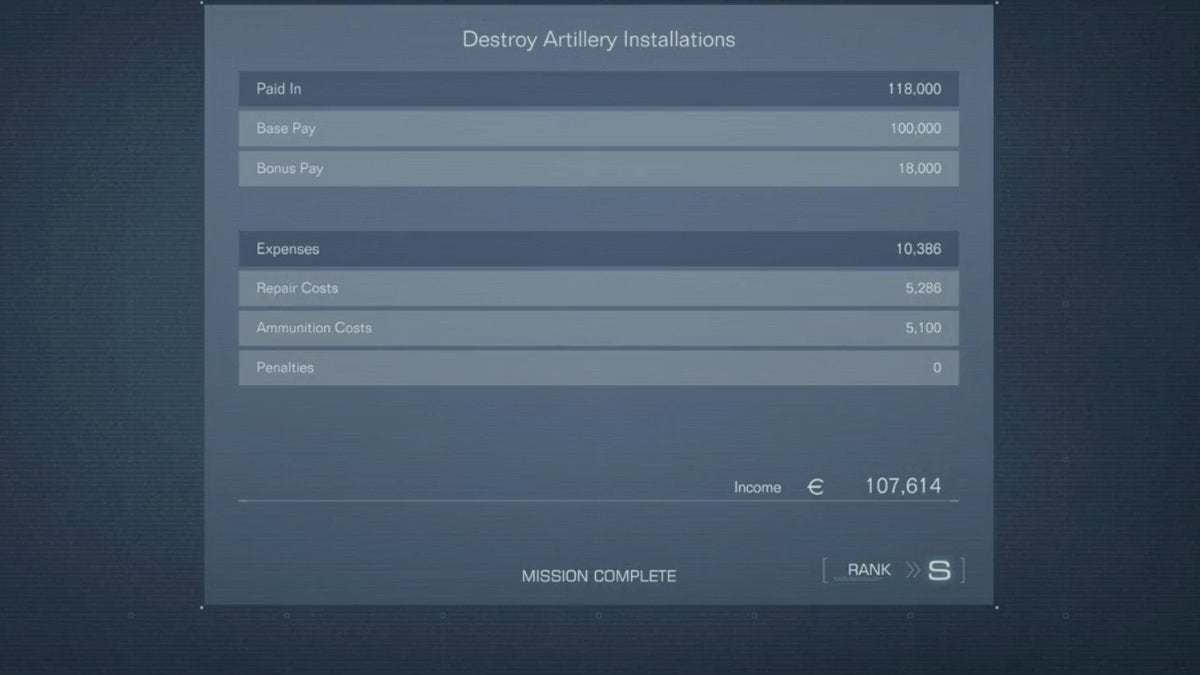
It’s incredibly hard to overcome problems in real life in some cases. There’s no clear goal outlined, no simple steps to follow, and, most crucially, no built-in teacher to guide you. You have to come up with your own goals, and teach yourself how to reach them, but, in the end, there may not actually be a noticeable reward.
This is where Armored Core 6—and games like it—come into play. To overcome any obstacle in AC6, you need to improve. To put together a good armored core build, you need to learn what makes each part useful. In order to take down strong opponents, you need to practice using your build. When neither of those is enough to beat a level, you’ll need to admit defeat, rethink your options, and then try again.
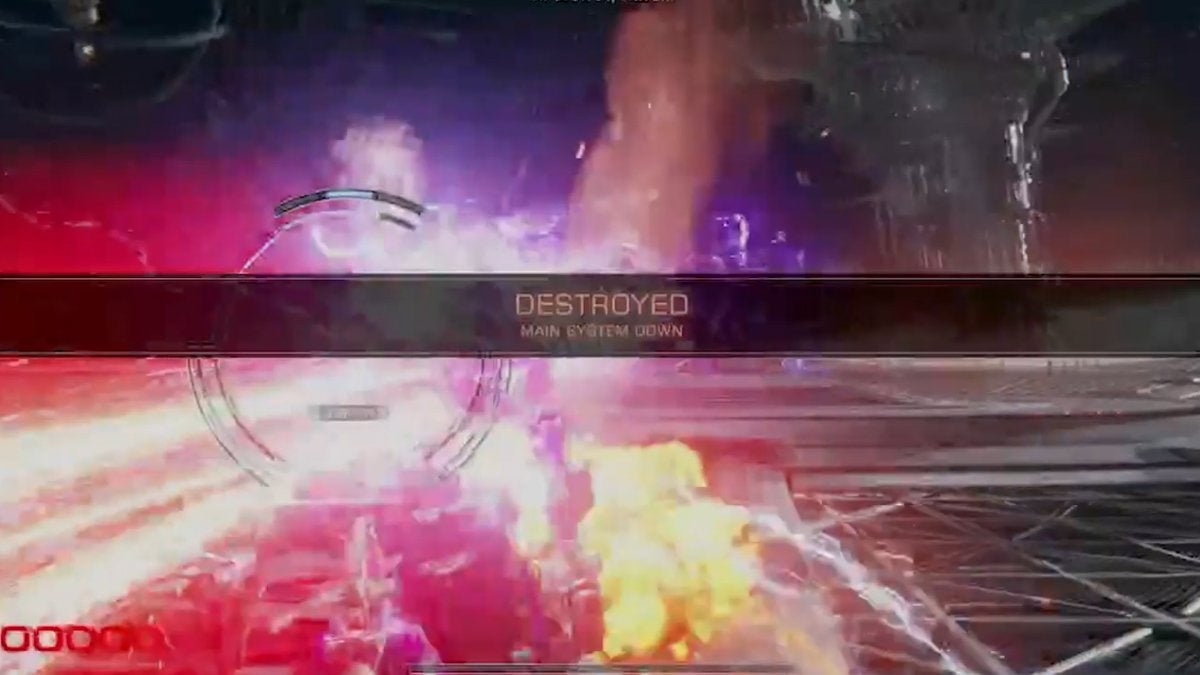
Failure isn’t the end of the path. This is true in video games as well as in real life. It can be disheartening to fail, but such discontentment only lasts until you prevail.
Feeling Emotional Release Through Digital Explosions
Video games are also an excellent way to blow off steam. Blasting zombies into bits and pummeling goblins into a fine paste always feels satisfying. While some consider such violence to be harmful, nothing could be further from the truth. Getting out negative feelings in a virtual environment means that people are less likely to do so in the real world.
The more fantastic the executions, the more interesting and memorable. In turn, these interesting and memorable events give people something to reflect on when they need to do so.
Moreover, knowing that there’s a safe place to get out the bad thoughts in a way that doesn’t actually hurt anyone is comforting and reassuring. This is why post-workday gaming sessions are as common as they are. Some people can’t wait to get home, boot up a much-loved title, and lay waste to their enemies. Sometimes, you just need to explode a tank or decapitate an orc to feel complete.
Depression, anxiety, and countless other mental health struggles are always going to exist. However, this doesn’t mean we need to accept them—we can fight back, much like how we can slay a dragon in Skyrim or defeat a demon in Dark Souls. By using the right video game during therapy, people can make more progress in their treatment than ever before.


